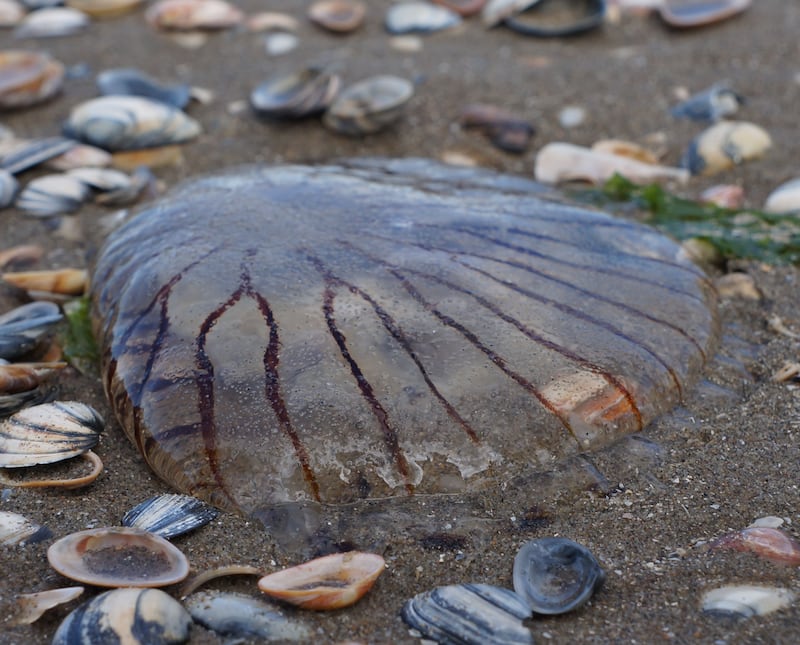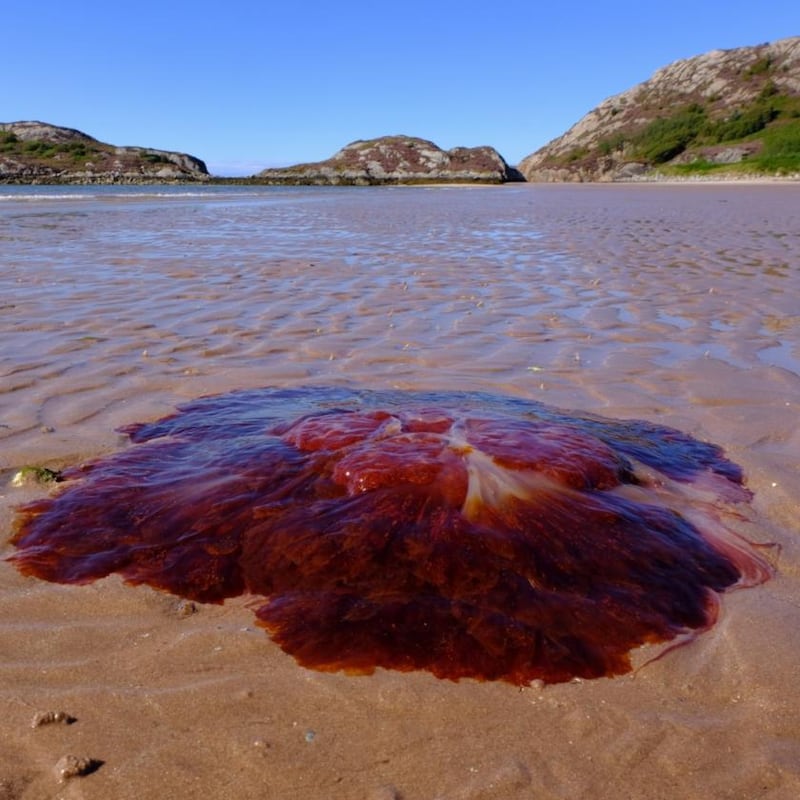Holidaymakers and other beachgoers should take care in the sea this summer, particularly around Co Kerry, where lifeguards and coast watchers are reporting significant numbers of jellyfish, especially on the Dingle peninsula.
Compass jellyfish have been seen right around the coast, and some lion's mane jellyfish have been washed up on Rossbeigh Strand, on the Iveragh peninsula, and on Ballybunion Beach, in north Kerry, according to Niall O'Sullivan of Kerry County Council. Beachgoers should ask lifeguards for advice and treatment if they are stung, he says.

Before going into the sea, it’s a good idea to scan the water for jellyfish, and to try to swim around them – even though this can be difficult, as tentacles can stretch for some distance. A jellyfish can still sting you after it has been washed up on the sand, so take care on the beach too – and be particularly careful with curious children and with pets.
How to deal with a jellyfish sting
[ Water Safety IrelandOpens in new window ]
- Leave the water immediately;
- Don't get stung yourself if you're helping others;
- Remove any tentacles from your skin with a stick, a towel or a gloved hand;
- Don't rub the affected area, as it could release more poison;
- Rinse the affected area with lots of seawater – not fresh water, vinegar, alcohol or urine;
- Put an ice pack or ice cubes inside a plastic bag, wrap the package in some dry cloth, such as a T-shirt, then apply this dry cold pack to the affected area;
- If you are stung by a Portuguese man-of-war – these are rare in Irish waters – use hot water (at about 45 degrees Celsius) on it for 20 minutes;
- Seek medical attention if you experience anything other than minor discomfort – and go to the nearest emergency department if you suffer swelling, breathing difficulties, palpitation or chest tightness after being stung.
Vincent Hyland, an underwater film-maker who is based in Derrynane,has created a downloadable guide to jellyfish, including the severity of their stings, from strong in the case of the blue jellyfish being spotted at the moment, to mild in the case of compass jellyfish. He took some dramatic shots this week of blue jellyfish 15m under the old Skellig Michael lighthouse, along with the see-through crystal jellyfish (which he points out is not actually a jellyfish but is commonly referred to as one).

This is the time of year for jellyfish, Hyland says, although there seem to be a lot of them this time around: he has received reports of 250m-long slicks (seen from a cliff on the Dingle Peninsula) and other “huge aggregations” in recent days. “I’m in the water all the time. Is it any worse than other years? Possibly. There are less fish – fewer predators now – to eat jellyfish.” Jellyfish predators include leatherback turtles as well as sunfish, which Hyland says are declining in numbers. Lion’s mane jellyfish, which prefer the colder waters of the east coast, are also being spotted in the southwest.

Jellyfish tentacles, which can extend for several metres, “all possess thousands of stinging cells which house stinging threads”, Hyland says. Each sting contains a neurotoxin that can paralyse a fish. “We humans have varying degrees of allergic reactions to jellyfish stings, ranging from mild to severe,” he explains.
A sting from a lion’s mane or blue jellyfish can feel like a nettle sting, and cause a red rash, but symptoms can vary depending on where the sting lands on the body: one on the thick skin of the hand, for example, will not be as painful as one on the face.

















